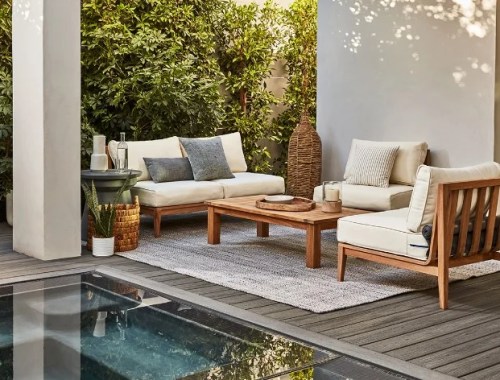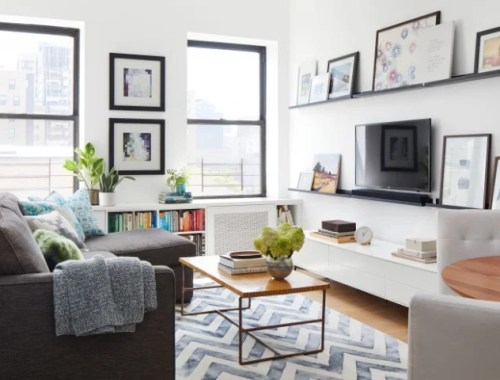
Garden Furniture: Enhancing Your Outdoor Living Space
Introduction to Garden Furniture
Garden furniture plays a vital role in transforming outdoor spaces into inviting retreats where people can relax, dine, and entertain. Whether it’s a sprawling backyard, a cozy patio, or a balcony garden, selecting the right furniture can significantly enhance the functionality and aesthetics of these areas.
Types of Garden Furniture
Outdoor Dining Sets
One of the primary functions of outdoor spaces is dining al fresco. Outdoor dining sets typically consist of a table and chairs designed to withstand exposure to the elements while providing comfort and style.
Outdoor Seating
Comfortable seating options such as sofas, armchairs, and ottomans are essential for creating inviting lounging areas in gardens. These pieces often come with weather-resistant cushions and frames, ensuring durability and comfort.
Loungers and Daybeds
For ultimate relaxation, loungers and daybeds offer a luxurious way to unwind outdoors. These pieces are perfect for sunbathing, reading, or enjoying a nap on lazy afternoons.
Garden Benches
Garden benches are versatile pieces of furniture that can serve both decorative and functional purposes. They provide seating solutions for various outdoor settings, from intimate corners to expansive lawns.
Swings and Hammocks
Adding a swing or hammock to your garden can evoke a sense of nostalgia and whimsy while offering a cozy spot for relaxation. These swinging seats are perfect for enjoying gentle breezes and tranquil moments.
Materials Used in Garden Furniture
Wooden Furniture
Wood is a popular choice for garden furniture due to its natural beauty and versatility. Teak, cedar, and eucalyptus are commonly used for outdoor furniture due to their durability and resistance to rot and insects.
Metal Furniture
Metal garden furniture, such as aluminum, wrought iron, and steel, offers durability and strength while adding a sleek and modern touch to outdoor spaces. These materials are often powder-coated to enhance weather resistance.
Plastic Furniture
Plastic garden furniture is lightweight, affordable, and easy to maintain, making it an ideal option for budget-conscious buyers and those seeking low-maintenance solutions. However, it may lack the elegance and longevity of other materials.
Rattan and Wicker Furniture
Rattan and wicker furniture exude a charming, rustic appeal that complements natural outdoor settings. While they are lightweight and flexible, they may require occasional maintenance to prevent damage from moisture and UV exposure.
Factors to Consider When Choosing Garden Furniture
Durability
Weather Resistance*
Style and Aesthetics*
Comfort*
Maintenance*
Tips for Maintaining Garden Furniture
Regular cleaning and maintenance are essential for prolonging the lifespan of garden furniture. Here are some tips to keep your outdoor pieces looking their best:
- Clean regularly: Wipe down surfaces with a mild soap solution and a soft cloth to remove dirt and debris.
- Protect from the elements: Use covers or store furniture indoors during inclement weather to prevent damage from moisture and UV rays.
- Apply protective coatings: Seal wooden furniture with a weatherproof finish and use rust-resistant paint on metal pieces to prevent corrosion.
- Check for damage: Inspect furniture regularly for signs of wear and tear, such as loose joints or frayed cushions, and address any issues promptly.
Creative Ways to Arrange Garden Furniture
Arranging garden furniture thoughtfully can maximize space and create distinct zones for different activities. Consider these creative layout ideas:
- Create conversation areas: Arrange seating in clusters to encourage interaction and intimacy.
- Define dining spaces: Position tables and chairs in a central location with ample room for movement and serving.
- Incorporate focal points: Place eye-catching features such as fire pits, water features, or sculptures to anchor seating areas and add visual interest.
DIY Projects for Upcycling Garden Furniture
Upcycling old or worn-out garden furniture can breathe new life into your outdoor space while reducing waste. Here are some DIY ideas to inspire your creativity:
- Paint old wooden chairs in vibrant colors to add a pop of personality to your garden.
- Repurpose wooden pallets into stylish and functional seating or storage solutions.
- Restore vintage metal furniture by sanding away rust and applying a fresh coat of paint or sealant.
- Use mosaic tiles to embellish tabletops or chair backs for a colorful and unique touch.
Benefits of Investing in Quality Garden Furniture
Investing in quality garden furniture offers numerous benefits, including:
- Longevity: Well-made pieces constructed from durable materials can withstand years of use and exposure to the elements.
- Comfort: Ergonomically designed furniture with plush cushions and supportive frames ensures comfort during extended periods of relaxation.
- Aesthetics: Stylish and well-crafted furniture enhances the visual appeal of outdoor spaces, creating inviting and welcoming environments.
- Functionality: Thoughtfully designed furniture with practical features such as adjustable settings and storage options enhances the functionality of outdoor living areas.
Environmental Impact of Garden Furniture
The production and disposal of garden furniture can have significant environmental implications. When choosing garden furniture, consider the following factors to minimize your environmental footprint:
- Sustainable materials: Opt for furniture made from renewable and responsibly sourced materials such as FSC-certified wood or recycled plastic.
- Eco-friendly production methods: Look for manufacturers that prioritize sustainable practices and use environmentally friendly production techniques.
- Longevity and durability: Choose high-quality furniture that is built to last, reducing the need for frequent replacements and minimizing waste.
Choosing Sustainable Garden Furniture
Sustainable garden furniture is designed with environmental considerations in mind, from sourcing materials to manufacturing processes and end-of-life disposal. Here are some tips for choosing eco-friendly options:
- Research materials: Look for furniture made from sustainable materials such as bamboo, reclaimed wood, or recycled plastic.
- Check certifications: Seek out products certified by reputable organizations such as the Forest Stewardship Council (FSC) or Cradle to Cradle (C2C) for assurance of sustainable practices.
- Consider longevity: Invest in durable and well-made furniture that will stand the test of time, reducing the need for replacements and minimizing waste.
Where to Buy Garden Furniture
Garden furniture is available from a variety of retailers, both online and in-store. Consider the following options when shopping for outdoor furniture:
- Garden centers and nurseries
- Home improvement stores
- Furniture stores
- Online marketplaces
- Specialty outdoor living retailers
Cost of Garden Furniture
The cost of garden furniture can vary widely depending on factors such as materials, craftsmanship, and brand reputation. While budget-friendly options are available, investing in quality pieces may offer better value in the long run by providing durability and longevity.
Popular Garden Furniture Brands
Several reputable brands specialize in designing and manufacturing high-quality garden furniture. Some popular brands to consider include:
- Teak Warehouse
- Polywood
- CB2
- Restoration Hardware
- IKEA
Trends in Garden Furniture
Garden furniture trends evolve with changing tastes and lifestyles, reflecting current design preferences and technological advancements. Some current trends in garden furniture include:
- Modular and customizable pieces that offer versatility and flexibility
- Sustainable materials and eco-friendly designs
- Integration of technology such as built-in speakers or lighting features
- Minimalist and contemporary aesthetics with clean lines and neutral colors
Conclusion
Garden furniture plays a vital role in enhancing outdoor living spaces, providing comfort, style, and functionality for relaxing, dining, and entertaining. By selecting quality pieces made from durable and sustainable materials, homeowners can create inviting retreats that reflect their personal style while minimizing their environmental impact.
FAQs About Garden Furniture
- Is garden furniture waterproof?
- While many types of garden furniture are designed to withstand exposure to the elements, it’s essential to check the manufacturer’s specifications for specific waterproofing features or recommendations.
- How do I protect my garden furniture during the winter months?
- To protect garden furniture during winter, consider covering or storing it indoors when not in use, applying protective coatings, and regularly inspecting for signs of damage.
- Can I leave garden furniture outside all year round?
- While some garden furniture can withstand year-round outdoor exposure, it’s advisable to take precautions such as using covers or storing furniture indoors during harsh weather conditions to prolong its lifespan.
- What is the best material for garden furniture?
- The best material for garden furniture depends on factors such as durability, aesthetics, and environmental considerations. Popular options include wood, metal, plastic, and rattan/wicker.
-
How often should I clean and maintain garden furniture?
- Regular cleaning and maintenance are essential for prolonging the lifespan of garden furniture. Depending on the material and usage, cleaning and maintenance may be required monthly, seasonally, or annually.
You May Also Like

Teak Outdoor Furniture
March 12, 2024
Wall Decor for Living Room: Elevating Your Space
March 10, 2024

